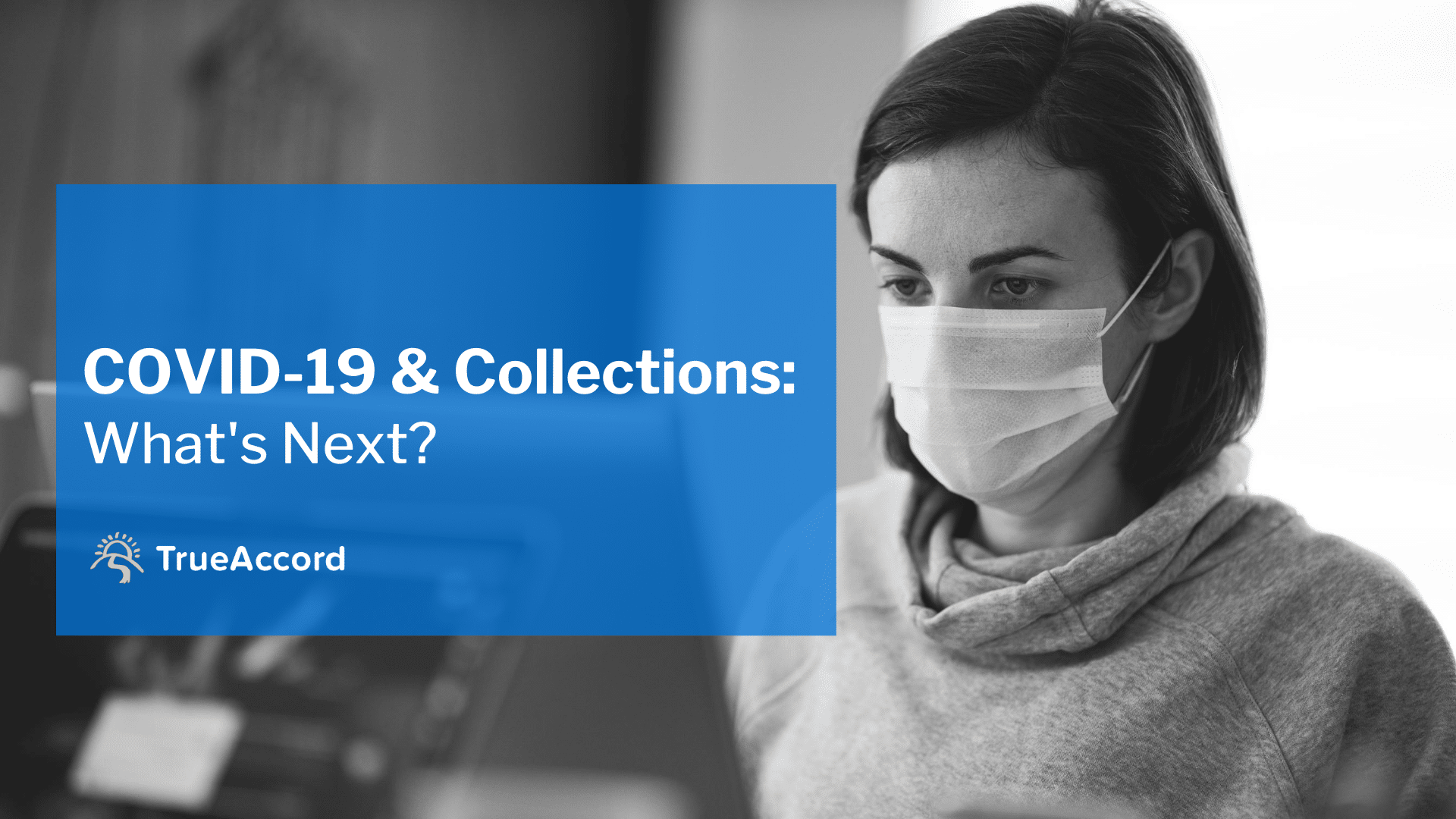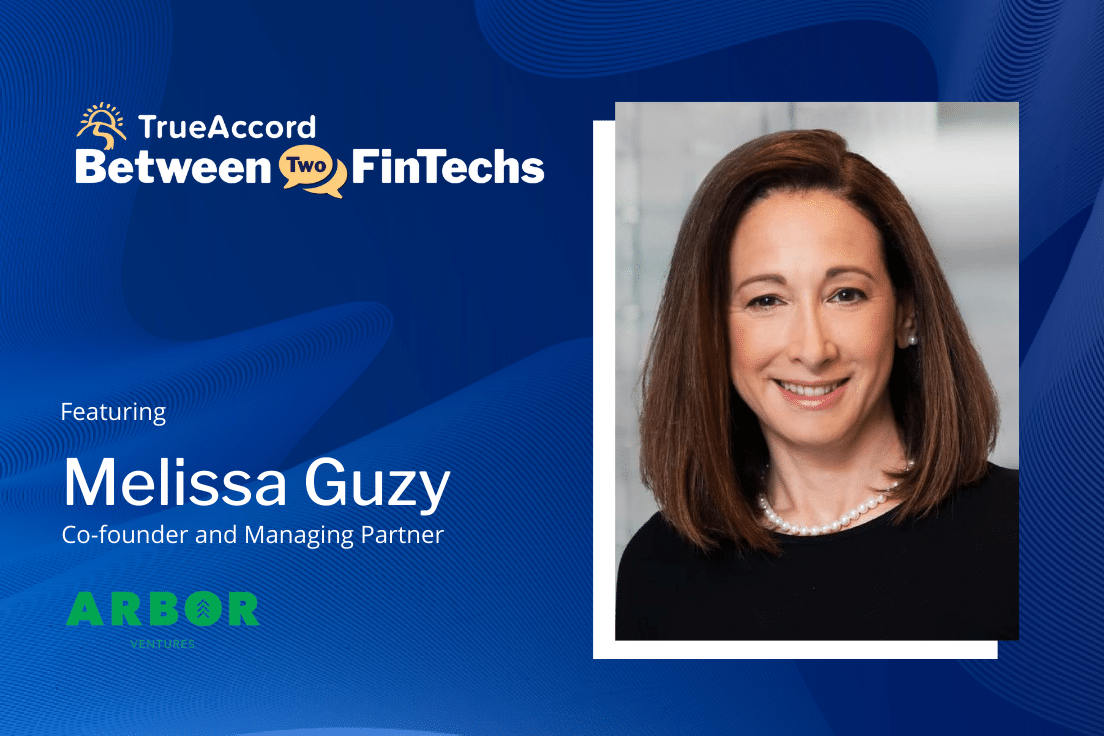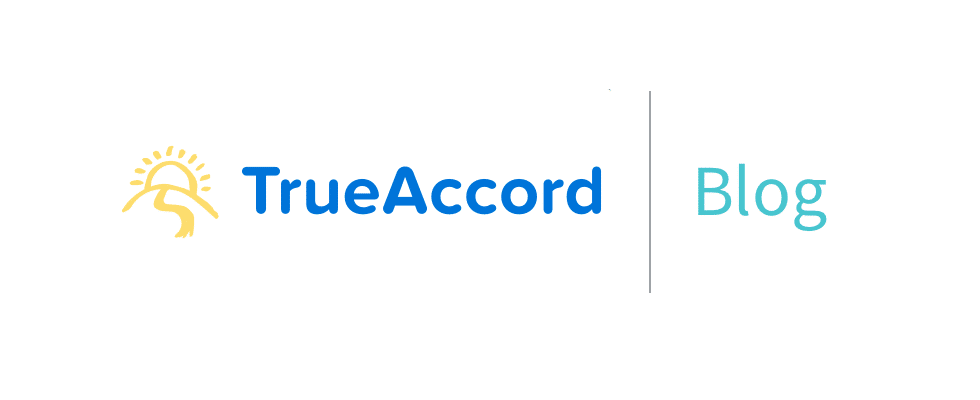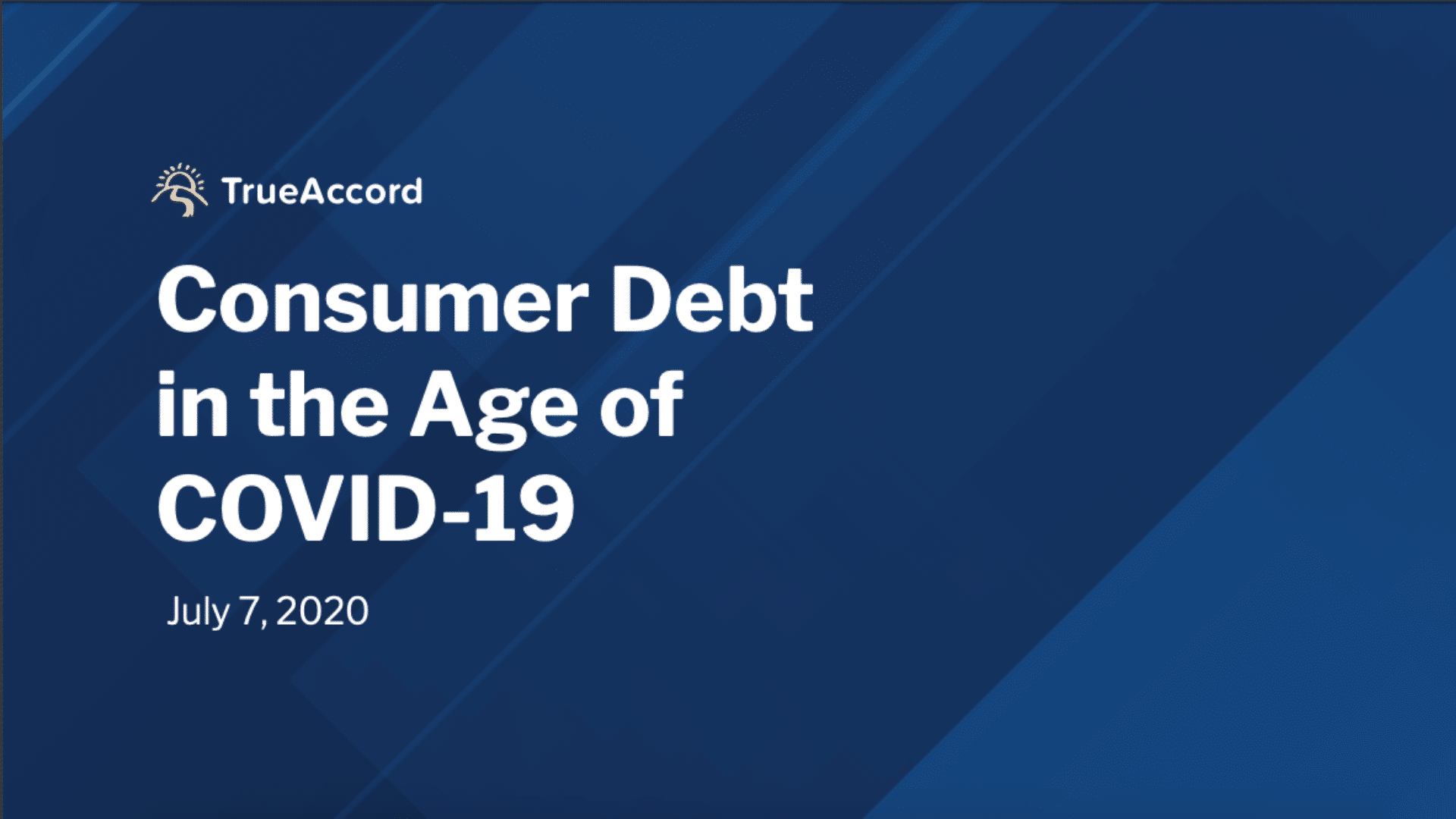Pitfalls on the Path to Digital Debt Collection
Banks are accelerating their adoption of new digital debt collection tools in anticipation of a “tidal wave of consumer debt issues” when government stimulus programs end and financial institutions stop offering forbearance and loan deferral options. That’s the premise of a new article in American Banker highlighting a variety of technology-powered strategies banks are using to make debt resolution more automated, conversational, and empathetic. These approaches range from the convenient (more flexible self-service payment options) to the high-tech (robotic process automation). The American Banker article highlights promising signs of progress, particularly for industry players that have not always been known for digital adoption. KeyBank, for example, is in the process of rolling out a self-service digital payment portal designed to offer banking customers privacy and flexibility in resolving payments. And Alabama-based Regions is implementing digital messaging and intelligent interactive voice response (IVR). At the same time, the article shines a light on the massive challenges facing any financial institution looking to implement intelligent digital debt collection at scale. Here are three common hurdles on the path to digital debt collection maturity – and why they matter: Challenge #1: “One-size-fits-all” approaches The challenge: In its overview of Regions, the article makes reference to a single conciliatory messaging tone used in all outreach to delinquent customers. Why it matters: Consumers differ vastly in their preferences and responsiveness to digital touchpoints. For example, one consumer might respond to a friendly message delivered by SMS, while another might respond best to a straightforward message delivered by email. As a result, a one-size fits all approach falls short of realizing the potential – in both performance uplift and customer experience – of true one-to-one personalization. The TrueAccord approach: HeartBeat, TrueAccord’s patented machine learning platform, mines through tens of millions of data points to optimize digital outreach on the individual level within a programmed set of compliance rules – and continues learning the more data it analyzes. Challenge #2: Narrow, channel-specific use of machine learning The challenge: Another challenge that banks face in scaling their use of intelligence – including artificial intelligence (AI) – is the limited deployment of algorithms and optimization within a single kind of channel, such as in a call center environment. The article profiles a collections and business process outsourcing company, for example, that developed an AI-based virtual assistant that can handle most inbound phone calls. Why it matters: Machine learning and artificial intelligence (AI) are powerful tools for restoring intimacy and relevance to customer relationships at scale. At their most useful, these tools should be deployed to personalize the customer’s full experience with a bank – not just the limited interaction on one channel. TrueAccord’s Approach: HeartBeat captures a continuous data feedback loop and optimizes for each customer touchpoint across a variety of digital channels, ensuring that each customer is being reached on the channel that is most relevant for her. Challenge #3: Building a truly comprehensive and flexible self-serve portal The challenge: Constructing a digital portal that drives consumer adoption and usage takes major work. To truly match the convenience of online banking, digital tools must also allow consumers to adjust the length and installment amount on a payment plan, defer a payment, dispute all or a portion of their debt, apply for a hardship pause on their debt, and much more.Why it matters: Research suggests that customers want to be able to self-serve. But doing so requires the full, flexible range of interaction options that would be available to them through traditional analog channels. TrueAccord’s Approach: Through a robust and flexible digital platform, TrueAccord offers a best-in-class self-serve experience: over 95% of users resolve their accounts without ever directly communicating with an agent. Ultimately, digital debt collection technologies offer banks the ability to build lasting relationships with their customers. As Kimberly Snipes, consumer chief information officer at KeyBank puts it in the American Banker article: “We want our customers to say, I hate that I had that situation, but I felt like my bank was working with me, not against me.” Being aware of the challenges on the path to digital debt collection – and having a plan in place to address them proactively – can help financial institutions ensure that they’re set up for long-term success. About TrueAccord TrueAccord is reinventing the relationship between creditors and lenders with a machine learning-driven, digital approach to debt collection. Our technology personalizes outreach to each customer across digital channels, continuously optimizing for performance while delivering a customer experience that builds long-term brand loyalty. Schedule a demo today to learn more.
TrueAccord discusses COVID-19 and collections
The COVID-19 crisis has ushered in an era of extreme uncertainty. As the country begins to slowly recover, the collections industry will face serious challenges. To help make sense of it all, we hosted a webinar with TrueAccord CEO Sheila Monroe and VP Customer Success Mega Rankin to discuss the impact COVID-19 has had on collections and what it means for the months ahead. Read on to learn how COVID-19 impacted companies and consumers, how digital debt collection adapted, and what to prepare for in the coming months. You can also watch the full webinar here. The COVID-19 Impact The spread of COVID-19 ushered in a wave of unprecedented health and economic uncertainty that rapidly changed daily life across the country. These changes affected almost every aspect of daily life, including finances. This uncertainty caused a disruption to tax season, typically a time when consumers pay off their debts at a higher rate than usual. As businesses across the country closed, there was a dropoff in consumer engagement with their debt (anything from opening an email, looking at plan options, calling into a call center, etc.), as well as payments. However, the coronavirus-caused recession turned out to be different from every other recession we’ve experienced. While unemployment skyrocketed to record levels in April, individuals actually saw an increase in personal income on average due to stimulus checks and increased unemployment benefits. With stay at home orders in place, spending on things like travel, entertainment, and dining decreased, which led to a record high personal savings rate. Many consumers took this opportunity to clear their financial slate. In addition to a higher level of engagement with debt, there was a substantial increase in lump sum payments in late April and early May. Of course, the impact of the virus was not consistent across all consumers. For this reason, flexibility was key during this time. We saw many consumers modify their plans to fit their new financial situation in late March and early April. And those consumers who did create new payment arrangements opted for longer plans with lower payments. Consumer choice is always a crucial part of any debt collection communications, but all the more so during a time of unprecedented uncertainty. Luckily, 90% of webinar attendees allowed consumers to modify their plans in some way. How digital-first debt collection adapted As consumers shifted their behaviors to match a new reality, businesses were also facing some serious challenges. Specifically, companies needed to shift to a work-from-home environment. For most debt collection agencies, this was the very first time they considered having the majority (if not all) agents working from home. Many companies struggled to make that shift, especially around taking payments in a compliant manner. That means that at the same time as consumers actively wanted to pay off their debts, many of them were not able to reach an agent to do so. As a digital-first debt collection agency, TrueAccord was able to rapidly adapt to best serve both our clients and consumers. Our cloud-based environment allowed us to seamlessly and safely shift our workforce to work-from-home, while our automated collections platform and self-serve payment portal, which allows us to carry agent workloads that are more than 50 times our competitors, ensured that consumers could self-serve payments, plan adjustments, and disputes while consumers who needed to talk to an agent were able to do so. Additionally, as consumer behaviors shifted, our machine learning-driven outreach was able to adapt to these new patterns to ensure the best customer experience. And as always, our digital communications and self-service tools enabled consumers to engage with their debts when it was most convenient for them. This was especially crucial as consumers were also shifting to working from home, often with spouses and children in the same spaces. With packed schedules, the ability to explore payment options on their own time, even outside of FDCPA hours, was key. What's next? While no one can be certain of what’s next, businesses must plan for multiple possible scenarios to best meet consumer needs. There are many factors to consider that will impact the future of the U.S. economy, including the unemployment rate, any possible additional government stimulus, vaccine development progress, individual states reopening and closing, schools reopening, and major employers going out of business. While the exact timeline for recovery may not be known, according to a FiveThirtyEight survey, 73% of economists believe there will be a reverse radical recovery, meaning after a sharp decline, there will be a sharp partial rebound followed by a slow recovery. Similarly, the Fed is predicting that unemployment will remain in the double digits through at least the end of the year. Perhaps for this reason, the audience’s two biggest concerns for the next 12 months were lower liquidation rates due to high unemployment and pre-charge off delinquency rising. That means that we can expect a few things to happen. It’s likely that there will be rising delinquencies through the end of the year, as a recent survey by the CFPB showed that 52% of households couldn’t cover expenses for more than two months after a loss of income. Additionally, as forbearance programs and hardship programs wind down, and government assistance becomes less regular, we can expect to see higher levels of charge off, and see generally lower levels of collectability while the economy slowly recovers. To learn more about how these changes are affecting the industry, watch the full webinar.
Between Two FinTechs: An Interview Series with FinTech industry leaders
Perspectives from Melissa Guzy, Co-founder and Managing Partner of Arbor Ventures At TrueAccord, we are motivated by how our work impacts consumer finance through technology. Given how broad the landscape is for fintech products and services, we’re excited to introduce a new speaker series on our blog, called “Between Two FinTechs: A Chat Series with FinTech Industry Leaders.” Hosted by our Founder Ohad Samet, these conversations will provide unique industry insights and a chance to highlight notable players in this space. For our inaugural interview, we’re honored to have Melissa Guzy, Co-founder and Managing Partner of Arbor Ventures, discuss her perspectives as an investor focused on fintech companies.This transcript was edited and condensed for clarity. Ohad Samet: We’re really excited to be launching this new series of virtual fireside chats. The goal of these chats is for us to meet with folks from across the industry, learn about the issues they care about, and gain new perspectives on the fintech space. Today, we have Melissa Guzy, general partner at Arbor Ventures, and board member at TrueAccord. Welcome Melissa! To start, can you tell us a little bit about yourself? Melissa Guzy: Thank you very much for having me. It's really an honor to do this and to chat with everyone on the team. My story is not that unusual. I did a startup in my 20s and it was a very colorful ride, both up and down—at one point, we even went public. After that, I joined VantagePoint Venture Partners as a partner. I spent 12 years there and then decided I really wanted to do something entrepreneurial again. So in 2013, I decided to start Arbor Ventures. It was very much like doing a startup all over again. We only invest in financial services, which is something that I'm tremendously passionate about. OS: Why the focus on financial services? MG: I always think you're a better investor when you're truly personally passionate about something than just thinking, "Hey, what's the latest fad?" An early experience has made me very passionate about debt collection in particular.When I first started my company, I had to put expenses on my personal credit card. which is what you do when you're completely and insanely committed to something. Eventually we received funding but it was quite stressful for a period of time. When I think about what TrueAccord is doing, I'm quite passionate about giving people a chance to get back on track There are so many unexpected events that have happened to all of us in our lives—including now during COVID. But that doesn't mean you're a bad person or that you're a bad risk. It just means at some point, you needed more flexibility than what the system was offering you. “When I think about what TrueAccord is doing, I'm quite passionate about giving people a chance to get back on the rails.” So when the opportunity came up to invest in TrueAccord, I said, "Absolutely." I think Ohad probably remembers we made a decision in two days. We never looked back and we've been fortunate to continue to invest in the company. OS: Thank you, and likewise we’re lucky to have you! What are some more qualities you look for in a startup that you would invest in? MG: It's about the people. I always say your relationship with a team or your investment lasts longer than the average marriage in the United States. When you think about investing in a company, you need to think, "I'm going to be working with this person through ups and downs for a long period of time. Is this someone I want to work with and spend my time with?" “Your relationship with a team or your investment lasts longer than the average marriage in the United States. You need to think ‘I’m going to be working with this person through ups and downs for a long period of time. Is this someone I want to work with and spend my time with?’” The second thing, of course, is the idea, but what we have found is that really good entrepreneurs can learn to pivot and change. Every company will go through ups and downs. So it starts with people and from there it's about industry and sector—what gets us excited. OS: Based on your experience, why do startups fail? Can you differentiate those who fail quickly versus those who fizzle out later? MG: That’s a great question. Startups never fail because of one issue. Startups fail by consistently making bad calls and judgments. We've been studying this for quite some time and usually it has to do with not wanting to deal with the core problem at any given point in time.You don’t want to deal with a problem or a challenge because you're fundraising, or you don't want to make a change on engineering because it'll slow something down. What happens is people start to put bandaids on decisions, and then all of a sudden, the next decision is based upon something you've already put a bandaid on, and that just keeps building. And to me, that's absolutely a point of failure.I think later startups fizzle out because people forget that you've got to innovate and iterate every single day. We live in a very competitive world that changes at hyper speed. Often, companies will reach a threshold and then stop growing because they actually stopped innovating. And they stopped innovating because they stopped taking risks.OS: Why do you think some fintech companies become successful versus others?MG: The most successful startups in fintech have not been technologically revolutionary. They've just solved something incredibly messy. Take Stripe as an example—a couple lines of code to be able to accept credit card payments on a website so an e-commerce company didn't have to hire a payments team. That was really simple. It wasn't rocket science. It was messy. What they solved first was very sticky, and then they were able to build around it. “The most successful startups in fintech have not been technologically revolutionary. They’ve just solved something incredibly messy.” If fintech companies start with something weaker, they're not going to be able to build around it. I think that's one of the benefits, again, of TrueAccord. We started with something really hard and now we can add everything around it to serve the consumer in the right way.What's so interesting is that many financial services are consumer-centric until someone's late on a payment, and then they don't like that consumer anymore. They fail to realize that it's always going to be consumer-centric. As long as we understand that everything we do, at the end of the day, is to help the consumer, we will definitely succeed massively. OS: How do you think COVID-19 is going to change funding and the overall startup environment? MG: I think Silicon Valley has had a hold on being the startup capital for a long time that’s well-deserved. During the 2000 downturn in venture capital, VCs on the East Coast pulled back and got scared. The venture capitalists in Silicon Valley never did, and I think that's why the Valley has the reputation it has. It's part of the fabric of the community to take risks and to back entrepreneurs. I think that's going to change as more startups and more people are moving out of cities, especially with COVID, and we'll see much more diffusion of startups across the United States —and across the world, for that matter. We will pull through, and we'll be in a new norm, and there'll be new opportunities. And you can be nothing but excited about the future.
TrueAccord Welcomes Laura Marino, Chief Product Officer, and Charles Deutsch, General Manager of Financial Services
As the US is starting to understand the impact of COVID-19 and its aftermath on our economy, more consumers are expected to default and find themselves dealing with debt. Banks, lenders, and other financial players are accelerating their digital transformation roadmaps, shortening years’ worth of development into mere months, in an attempt to service consumers at scale while managing the complexities of our new normal and the limitations of outdated infrastructure. This push to digitize rewards market leaders, and as a result TrueAccord is growing, and every month we serve more consumers and more financial institutions than we ever did. Growth attracts clients, funding, and world-class talent, and the latter is what we're excited to announce today. Laura Marino joins TrueAccord as Chief Product Officer. We work with some of the most sophisticated financial institutions in the world, and they require outstanding innovation, speed to market, and high-quality execution. Consumers need delightful experiences and a helping hand on their way back to financial stability. Laura’s experience at Lever and other enterprise-facing technology companies will be instrumental in upleveling our product offering, meeting our clients needs, and articulating a roadmap that combines an understanding of regulations, robust architecture, and an ever-evolving, high-performing servicing capability that supports financial institutions and consumers alike. Charles Deutsch joins us as General Manager of Financial Services. TrueAccord offers low-friction, easy-to-use repayment tools for consumers who are ready to tackle their debt repayment journey and improve their financial stability. Regardless, many consumers can’t pay their debts because of financial difficulties. Charles will draw on his vast experience in running fintech businesses to build tools to help consumers improve their financial situation, and as a result, their ability to repay debt. Laura Marino and Charles Deutsch join a world-class team composed of company Founder and CEO of TrueAccord Group, Ohad Samet, Sheila Monroe as COO and CEO of TrueAccord Corp, Gene Linetsky as CTO, Noah Barr as CFO, and Nadav Samet as CIO and General Manager of True Life Solutions, which launched the game-changing consumer product, Engage.
What Debt Repayment Trends Can Teach Us About Consumer Needs
The collection industry has come a long way since local door-to-door agents tracking their accounts on index cards, and yet there is still a dearth of data. Most agencies rely on age-old adages or instinct to make operational decisions. Our six years of working with millions of consumers to resolve their debts digitally has given TrueAccord unique insight into consumer behavior. We turned to our data—aggregated across more than 12 million U.S. consumers—to better understand how consumers were engaging with their debts and what it tells us about the future of the industry. Consumer confidence in the economy matters Before consumers even consider paying a debt, they start engaging with the debt collector. This engagement can take many forms, from clicking a link in an email or a text message, listening to a voicemail, visiting a debt collection website, or even calling into a support center. All of these actions indicate that a person is reviewing their options—a serious first step toward payment. Our work with consumers has shown us that engagement tends to increase when consumer confidence about the economy (and their own financial situation) is high and decreases when consumers are more uncertain about their ability to pay. For example, the graph below shows click-through rate (CTR) trends for TrueAccord’s collection emails through late 2019 and early 2020 (the blue line), alongside the monthly change in U.S. personal income levels (the grey dotted line), based on data from the Bureau of Economic Analysis. While CTR is a more volatile metric, the overall direction mirrors the changes in personal income. Engagement metrics, like CTR (shown here), trend positively with monthly changes to personal income. Payments are scheduled around paydays Based on TrueAccord data, it’s clear that consumers prefer to make payments on Fridays more than any other day of the week. Fridays accounted for only 14% of the days in 2019, yet 35% of payments from payment plans were made on Fridays. The first, fifteenth, and last of each month also have large surges of payment volume. It makes sense that consumers plan their debt payments around when they receive their paychecks each month. In a typical month, payment volume is highest around popular paydays: Fridays, the 1st, 15th, and last day of the month. Tax season is the busiest time for paying off debt Nearly 80% of U.S. households receive a tax refund each year, amounting to about $2,800 on average. This influx of cash can be a lifeline for many families struggling financially, so it’s no surprise that a survey by the National Retail Federation found that 34% of consumers who expect a tax refund plan to use it to pay down debt. For this reason, late February through early April is the busiest time of the year for paying off debt (as shown with TrueAccord data below). In fact, we generally see a one-day peak in the last week of February, the first possible time to get a tax refund. After April, debt payments generally slow down again until Q4, when seasonal employment and gifting once again provide many American households with additional boosts of income. Payments peak in March due to tax season, then slow down in Q3. There is another surge in payments during the holidays. These trends all point to a simple truth—consumers choose to pay their debts when they have the money and confidence to do so. Rather than coerce consumers into making payments immediately, debt collectors should provide flexible (and ideally self-service) payment options. Especially in times of economic uncertainty, it is important for consumers to feel confident that they can adjust their payments to accommodate uneven or unpredictable cash flow. To learn how these behaviors have changed during the coronavirus crisis, plus 4 specific actions collection agencies can take to adapt, download our report, Consumer Debt in the Age of COVID-19.
3 Sessions We’re Excited to (Virtually) Attend at the iA Strategy & Tech Conference
iA Strategy & Tech, a conference built for strategy, technology, and analytics professionals in the credit and collections industry, kicks off this week. The team at TrueAccord is busy preparing for three days of insightful sessions, digital networking, and country music. Here are the sessions we’re most excited about: 1. The Path to Innovation Part I - The Industry Outlook and Guidance to Help Weather the Storm When: July 21, 12:30 pm EDT The speakers: Steve Dymowski, Head of Collections Strategy, TD Bank, with a panel of experts from Bridgeforce Why we’re excited: The coronavirus crisis has changed the way businesses and individuals are operating around the world. We’ve been thinking a lot about the impact this has had on the collections industry in particular, from the switch to work-from-home, to huge shifts in consumer behavior, so we’re excited to hear how others in the industry are approaching this topic. 2. Segmentation and Prioritization - The Evolution When: July 22, 3:30 pm EDT The speakers: Terry Gildden - Associate Partner, The Intelitech Group, Greg Hocutt - President, Hollis Cobb and Associates, and Tyler Roark - Senior Partner, The Intelitech Group Why we’re excited: Experimentation is key to a strong digital debt collection strategy, so we’re looking forward to this session on evaluating strategy changes, both short and long term. Plus, we can never stay away from a session that promises discussion on holdout populations and test and control group sizes. 3. The Path to Innovation Part III - The Legal and Compliance Reasons Why You Can Innovate When: July 23, 12:30 pm EDT The speakers: Rachael Bowman, Operations Strategy and Innovation, Discover Financial Services, Kristyn Leffler, Digital Strategy Director, Resurgent Capital Services, and Tim Collins, Chief Compliance Officer, TrueAccord Why we’re excited: We’d never turn down an opportunity to hear TrueAccord’s Chief Compliance Officer Tim Collins speak, but this panel also promises to be one of the most insightful and actionable. The collections industry has historically leaned on compliance as a reason not to innovate. This group of experts will discuss not only why it’s crucial to innovate, but how to do so within legal boundaries.
4 Key Trends From H1 2020, Based on our COVID-19 Report
Six months in, it’s safe to say 2020 is not the year that anyone expected. The worldwide spread of COVID-19 has ushered in a wave of unprecedented health and economic uncertainty that has rippled through every aspect of life. In our report, Consumer Debt in the Age of COVID-19, we studied the impact this crisis has had on consumers so far and what it means for the months ahead, based on digital debt interaction data from more than 12 million consumers. Here are four key trends from the report: 1. Consumers chose to leverage CARES Act checks to pay off debts Unsurprisingly, there was a huge decrease in debt payments in early March as the nationwide economic downturn began, despite typically being the strongest performance month for debt collection. However, as a result of the CARES Act, the average personal income in the U.S. rose by 10.5% in April 2020 and many Americans chose to use this additional money to pay off debt. Specifically, there was a near-instantaneous increase in debt payments on April 15th, the day the first major wave of CARES checks hit bank accounts. On that day, debt repayment dollars were 25% higher than on February 26th, the first day of tax season and previous payment peak. When presented with a one-time surge in income (like a tax refund or stimulus check), many consumers chose to pay off their debt all at once, rather than having to keep up with a payment plan over time. In April and May of 2020, 40% of payments were lump-sum payments — 50% more than the same period in 2019. For many people, the stimulus check represented their path to a clean financial slate. With an uncertain economic future ahead, many opted to clear their debts completely rather than dole out payments over the course of many months. This can be especially important before a recession to ensure easy access to credit lines, should they be needed, in the future. 2. Engagement fluctuated throughout the crisis The actions consumers take before resolving a debt can provide insight into their intentions. For example, when a consumer visits a collection website, opens an email, or clicks on a link, it’s likely that they’re starting to consider their options in regards to their debt, even if they don’t take any action that day. Tracking these intention-driven engagements or “prepayment activity” can help a company understand how likely it is that consumers will pay their debts. In terms of these types of engagement, 2020 started like any other year — there was a notable increase in prepayment activity in late February as the first tax refunds were being distributed. However, by early March, the severity of the coronavirus pandemic became evident and a steep decline in engagement began. Not long after a national emergency was declared on March 13th, engagement dropped to pre-tax season levels. For example, on March 14th, click through rates were almost 40% lower than the same date in 2019. That all changed once the CARES Act, a $2 trillion relief bill including “economic impact payments” for many American families, was passed. The promise of an unexpected windfall caused consumers to consider paying off their debts. Even before these stimulus payments first started hitting bank accounts on April 15th, there was an increase in engagement across all channels. That bump was short-lived, as engagement began a steady decrease shortly thereafter. 3. Cash stimulus provided short-term financial stability for many Despite the increased volume of payments, fewer payments failed in April and May than usual. In fact, for those months, there was a 35% decrease in failed payments year over year. This can be attributed to two factors: consumers preemptively modifying their payment plans in March and the sudden infusion of cash directly to consumers’ bank accounts. For some households, the combination of a tax refund, stimulus check, and additional unemployment benefits provided unprecedented liquidity. Unfortunately, that trend (and that liquidity) did not last long. By late May, an increasing number of payments were failing. While failure rates were still below pre-pandemic levels at the end of June, they are unlikely to decrease again without additional governmental aid. 4. Flexible plan options were key in fast-changing environment While resolving debts in full is the ideal for most consumers, it isn’t always possible. Most consumers choose to set up a payment plan that allows them to pay in smaller installments over time. In the first half of the year, consumers' preferences for these types of plans rapidly shifted in line with changing economic conditions. While fewer consumers started new payment plans in March than earlier in the year, those who did choose to start a plan opted for a longer time horizon and lower monthly payments. This trend was accelerated by many creditors offering longer payment plan options to better serve consumers at the start of the pandemic. In mid-March, the average payment plan was 25% longer than ones started during tax season. As uncertainty loomed, it’s likely these people tried to minimize their cash outflows. As more money was infused into the economy through the CARES Act, that trend reversed, with consumers once again opting to start payment plans around April 15th (a 22% increase from the previous week) and choosing shorter timelines. However, by the end of May, consumers were once again opting for longer plans, and signing up at a slower pace. Similarly, consumers flocked to modify their existing payment plans in March as mass layoffs and furloughs spread through the country. This behavior slowed to pre-pandemic levels once stimulus was introduced, only to begin rising again in late May. One thing is certain — the ability to set up and modify plans on their own terms was clearly important to consumers. Most consumers want to pay off their debts when possible, but in uncertain times, they may not be sure that they can afford to do so. Providing the freedom to customize a payment plan or lower monthly payments when necessary gives consumers the confidence they need to commit to a plan. What's next? As Americans spend the last of their stimulus cash, and unemployment benefits are due to expire, the future looks uncertain. While one-time stimulus empowered many consumers to resolve their debts, by late May, payment failures once again began to rise, even as payments slowed. What happens in the second half of 2020 will depend on many factors including additional governmental aid, employment opportunities, viral spread, and the presidential election. No one can be certain what will happen next, but one thing is clear: consumers need the flexibility to pay off debt on their own terms. The first half of the year showed that consumers want to pay off their debts when possible, but in uncertain times, they may not be sure that they can afford to do so. As the world settles into a “new normal,” the industry will have to be prepared for unpredictable payments based on the ever-evolving economic situation. Want a deeper dive into the data? Download our report, Consumer Debt in the Age of COVID-19.
How the collections industry can serve consumers in times of economic uncertainty
Debt collection is a highly regulated industry and as such, is notoriously slow to change. While there are a number of reasons for this, the end result is a growing gap between consumer’s expectations and the services creditors offer. TrueAccord’s recent report, Consumer Debt in the Age of COVID-19, found that during times of economic uncertainty, this gap can grow even wider. Repayments may be irregular for the foreseeable future, so when consumers do choose to pay, it’s up to collectors to make the process as simple as possible. Now more than ever, it’s clear that the collections industry needs to catch up with other financial services and provide modern solutions for the consumers it services. Debt collectors can pave the way for an improved consumer experience with context-aware messaging, flexibility, and opportunities for consumers to engage on their own terms. Use Context-Aware Messaging A consumer’s relationship with a debt collector begins well before any payment activities. While this relationship has traditionally been built on a series of letters and phone calls, today, it’s crucial to leverage digital channels and a context-aware approach. Consumers expect a personalized experience from their financial services, and debt collection should be no different. Customizing communications based on context improves engagement and enhances the customer experience. To succeed, digital debt collectors must leverage their messages from robust content libraries, selecting the right communication at the right time. A key part of finding the “right” message is striking the right tone. Financial hardships are challenging to navigate and as a debt collector, being patient and offering solutions can make a world of difference. At TrueAccord, our machine learning engine, Heartbeat, chooses the “right” message to send from thousands of legally approved communications based on the millions of people TrueAccord has worked with in the past. We’ve found that the right content in an email can increase click-through rates by 20%. To be sure, optimizing content is about tone and timing — not increased frequency of communications. In fact, there are many safeguards in place to protect consumers from email overload. Not only will email service providers identify those who over-email as spam, but consumers can also independently unsubscribe or flag messages as spam if they feel harassed. Provide Flexible Options Offering consumers flexible payment options is not only better for customer experience, but it can have a dramatic impact on payment plan retention as well. Our research shows that consumers are 50% less likely to drop off of a flexible payment arrangement. While flexibility has always been a differentiator for debt collectors, it is especially important during times of economic hardship and uncertainty. Consumers are more likely to begin a payment plan if they are confident that they can adjust their payments to accommodate uneven or unpredictable cash flow. We’ve found that consumers are more inclined to pay off debts that they feel are manageable and are owed to a company they trust. Introduce Self-Service Options Today, consumers take care of most of their financial needs without ever talking to a human, and paying a debt shouldn’t be any different. Online self-service tools have become the norm across financial institutions and debt collectors need to follow suit to best serve consumers. All debt collectors should set up a payment portal so that consumers can seamlessly make payments online. This type of self-service tool reduces friction for the consumer by removing the need to speak to an agent and allowing them to pay at any time, not just during business hours. Our data shows that 17% of consumers access our website before 8:00 a.m. or after 9:00 p.m — times when they could never talk to an agent. To truly match the convenience of online banking, digital tools must also allow consumers to take a variety of actions including (but not limited to): Adjusting the length and installment amount on their payment planDeferring a paymentDisputing all or a portion of their debtEntering bankruptcy informationApplying for a hardship pause on their debt. Implement Smarter Staffing In times of national economic uncertainty, payments are likely to be inconsistent. For example, during the coronavirus crisis, we may see spikes in payment activity as individuals receive governmental aid or businesses are able to hire back their workers. Unfortunately, staffing becomes very complicated when there is uncertain demand. On top of that, operating a call center is currently harder than ever, with most states still requiring staff to work from home—a challenge for compliance, IT, and HR. One step companies can take is to prepare for spikes in payments based on leading indicators of future demand. These can include factors such as economic indicators (like unemployment rate), governmental aid programs (like the CARES Act), and consumer digital engagement trends (like click-through rates on emails). While these indicators won’t provide enough time to train a whole new team of agents, they may signal a good time to bring in your seasonal staff. But in order to succeed in the long-term, debt collection agencies must introduce a digital-first model. Once someone decides to pay a debt, having digital payment options alleviates pressure on the call center. At TrueAccord, 95% of consumers resolve their debts without ever speaking with an agent. Needless to say, humans are still crucial. While machines are great at handling routine requests, there is no replacement for a well-trained agent to help customers with more complex situations. However, with the help of digital tools, each agent is more efficient. At TrueAccord, each agent is able to service more than 80,000 accounts (and counting) vs. a traditional agency’s 1,000-2,500. This type of hybrid model provides the best possible customer experience, even during busy times. During times of economic uncertainty, debt collectors must adapt to an operating model that empowers consumers to manage their debts in the way that makes most sense for them. Based on historical trends, as well as the consumer behaviors we’ve seen in the first few months of the coronavirus pandemic, we recommend that all companies collecting debt should use context-aware messaging, provide flexible options, introduce self-service options, and implement smarter staffing.
New Report: Consumer Debt in the Age of COVID-19
Today, TrueAccord released Consumer Debt in the Age of COVID-19, a report exploring how debt repayment and other consumer behaviors have changed throughout the coronavirus crisis. Based on aggregated, anonymized data from 12 million U.S. consumers, the report highlights that consumers choֵse to pay off debt when provided with an infusion of cash, even during a time of unprecedented economic uncertainty. Despite an initial slowdown as the crisis worsened in the U.S, debt repayment volumes hit a record high on April 15th, the day the first wave of CARES Act checks hit bank accounts. Key insights and trends from the report include: Consumers chose to leverage their CARES Act cash to pay down debt. On April 15th, there was a near-instantaneous increase in debt payments as the first wave of checks hit bank accounts. Payment dollars were 25% higher than the previous tax season peak. One-time stimulus changed consumer behaviors. With stimulus checks in hand, consumers flocked toward paying off their debt in full — the rate of lump-sum payments was 50% higher than the same period last year. The ones who did sign up for payment plans chose shorter payment terms with higher monthly installments. Payments will continue to be irregular. In early March, nationwide panic led to decreased engagement and payment activity from consumers. While stimulus payments and unemployment benefits empowered consumers to pay off debt in record numbers in April and May, that trend won’t remain constant over the coming months. “TrueAccord has always known that consumers in debt aren’t villains or victims — they’re caught in a difficult situation, trying to optimize for day-to-day survival while managing their obligations,” says Ohad Samet, CEO of One True Holding Company, the parent company of TrueAccord. “So when presented with an unexpected windfall and fewer spending opportunities, many of these consumers chose to repay debt. This trend was especially clear for a company like TrueAccord, which puts consumers in charge, by providing self-service tools, rather than coercing them into making a payment.” With an uncertain economy and the possibility of additional stimulus packages, debt collectors must be prepared for unusual spikes in engagement and payment in the coming months. In order to best serve consumers, they must streamline their processes to make it as easy as possible for consumers to pay their debts when they choose to and to modify their plans when they can’t. The report includes four recommendations that companies collecting debt can implement to update their operations for this unusual time. “Consumers have learned to expect digital-first solutions from their financial service providers, and the collections industry needs to keep up,” said Sheila Monroe, CEO of TrueAccord. “Our systems and processes empower consumers to engage when they want to, where they want to, using their device and channel of choice, and provide the flexibility to set up payment arrangements that fit their irregular schedules.” For more information, download the full report, Consumer Debt in the Age of COVID-19, here. Sign up to get future reports and updates:
Consumer Behavior During COVID-19 Crisis Provides Insights Into a New Era of Debt Collection
The COVID-19 crisis has rapidly changed the way individuals and businesses operate around the world, and with no clear end to the pandemic in sight, it’s unclear when, or how quickly, the economy will start to recover. To better understand the effect this uncertainty has had on debt collection, we analyzed data from over 12 million consumers of major banks, issuers, eCommerce companies, and direct lenders. In our upcoming report, Consumer Debt in the Age of COVID-19, we use this data to review consumer repayment trends, the role of stimulus checks in that process, and what debt collection companies will need to do to adapt. Here’s what you can expect from the report: Pre-coronavirus payment insights. In order to provide a benchmark for new or rapidly changing consumer behavior, we reviewed common pre-pandemic payment trends, like payment surges during tax season. COVID, CARES, and consumer concerns. We tracked consumer behaviors around engagement and payments throughout the crisis—from the onset to the declaration of a national emergency, passing of the CARES Act, distribution of stimulus checks, and beyond. Consumers were clearly concerned early in the crisis—engagement with debt was down 40% year over year in mid-March—but when stimulus checks provided an infusion of cash, consumers overwhelmingly chose to use it to pay their debts. Click through rates plummeted in March as the crisis worsened, only to reach a record high post-stimulus. What’s next for debt collection? As the crisis continues and consumer payments are slowing, debt collectors must adapt to survive. Based on the payment and engagement trends outlined in the report, we share four key steps debt collection companies can take to best serve consumers in the “new normal.” If you’re interested in reading the full report, fill out the form below to get notified when it goes live.
Get started right now.
Whatever your organization’s technical needs, we have the tools and experts to onboard you today.
Get Started








